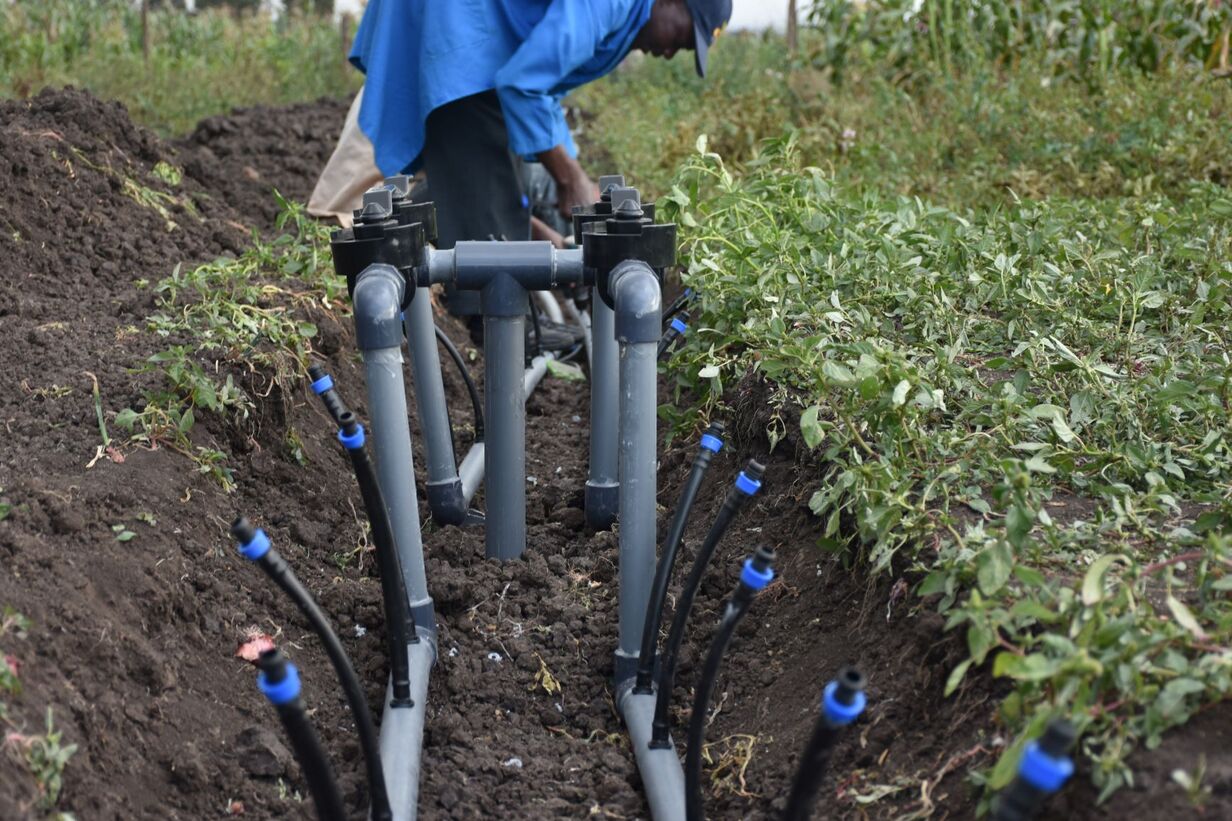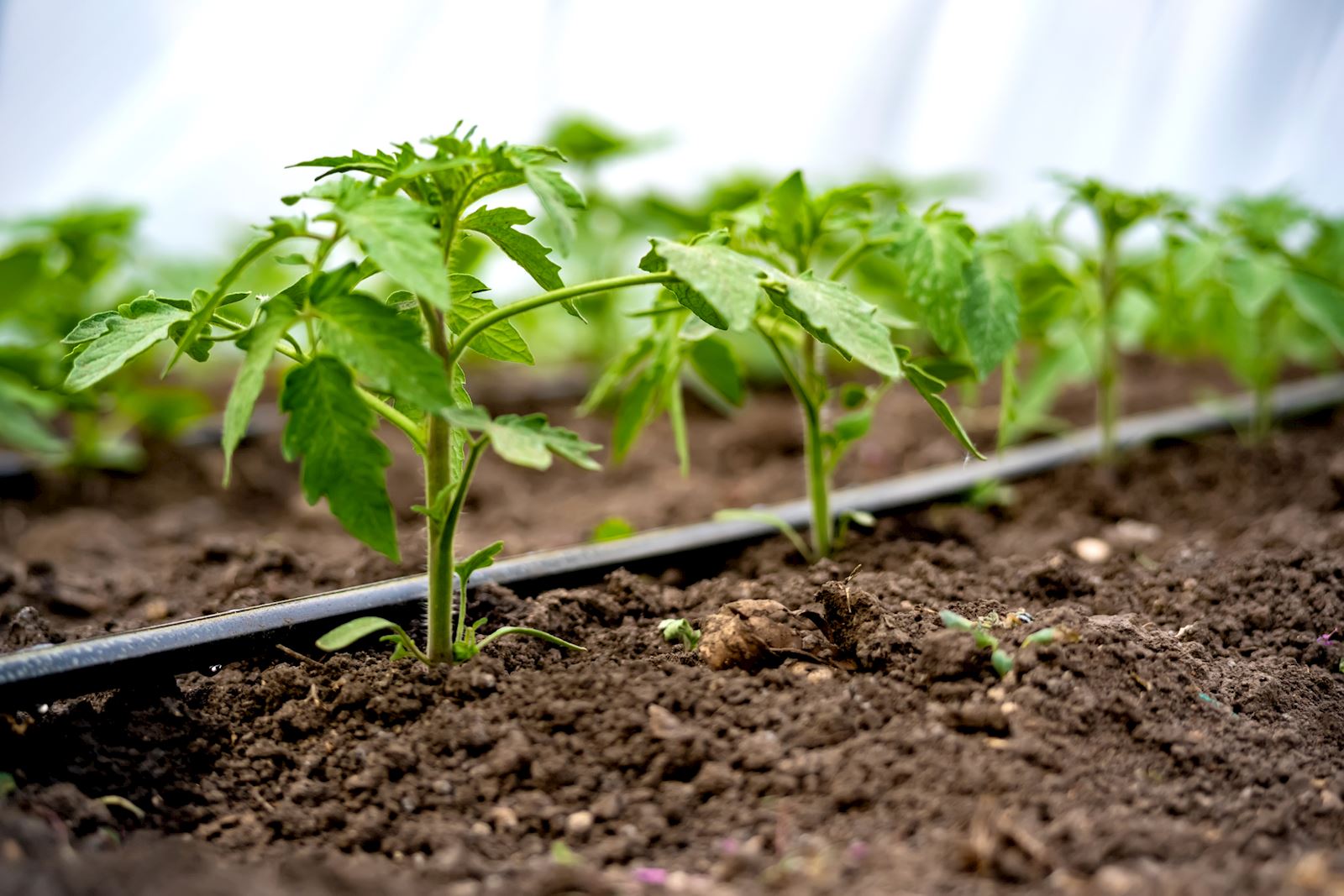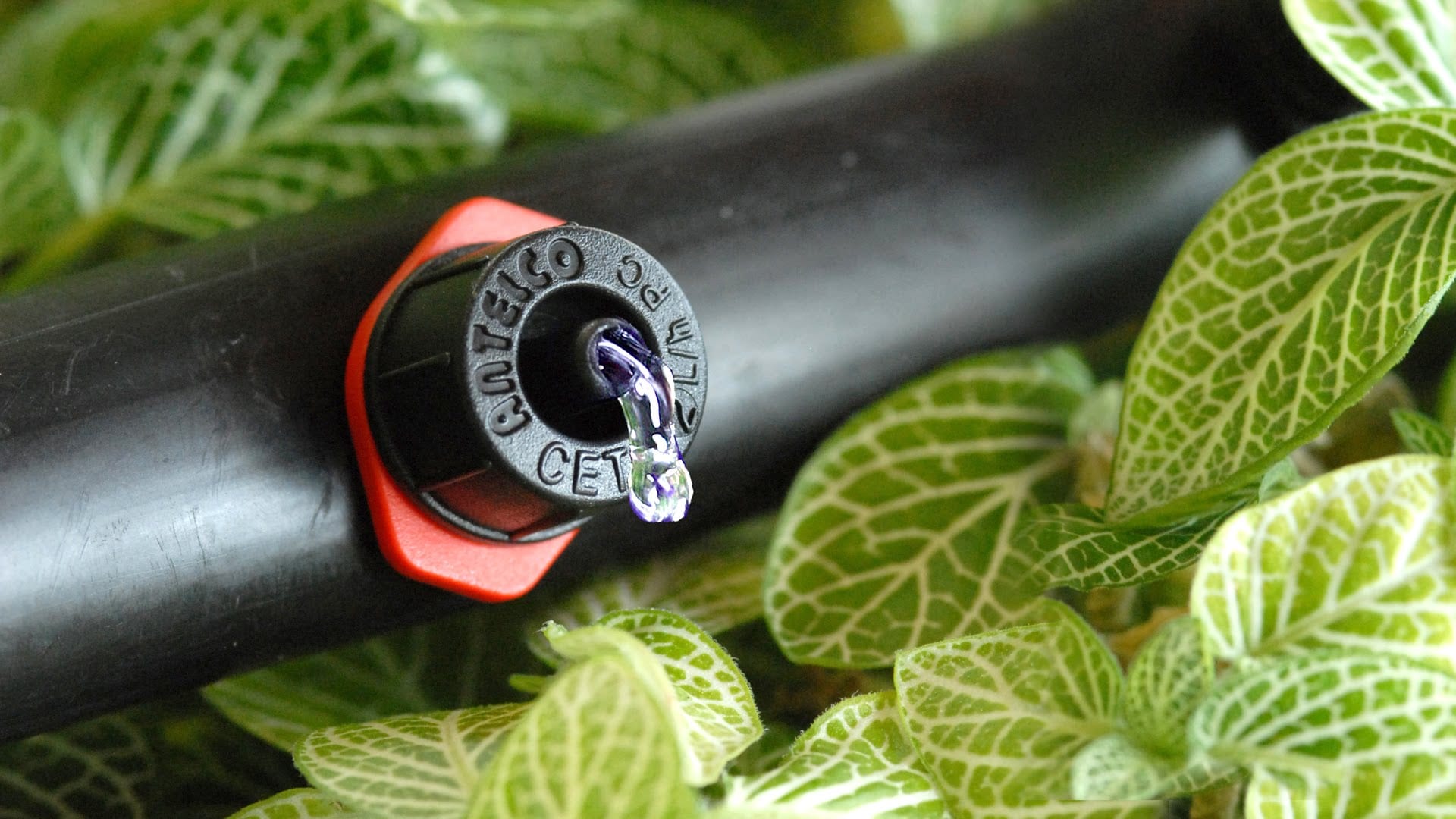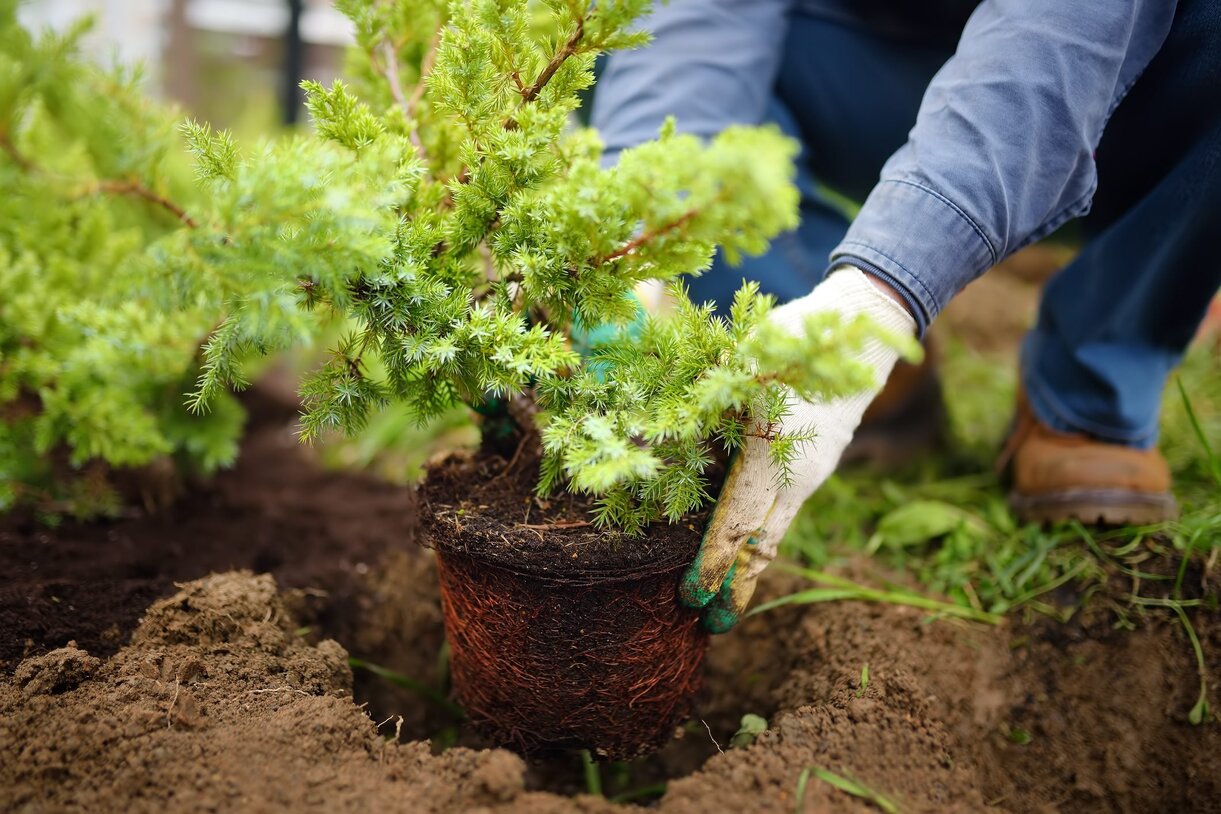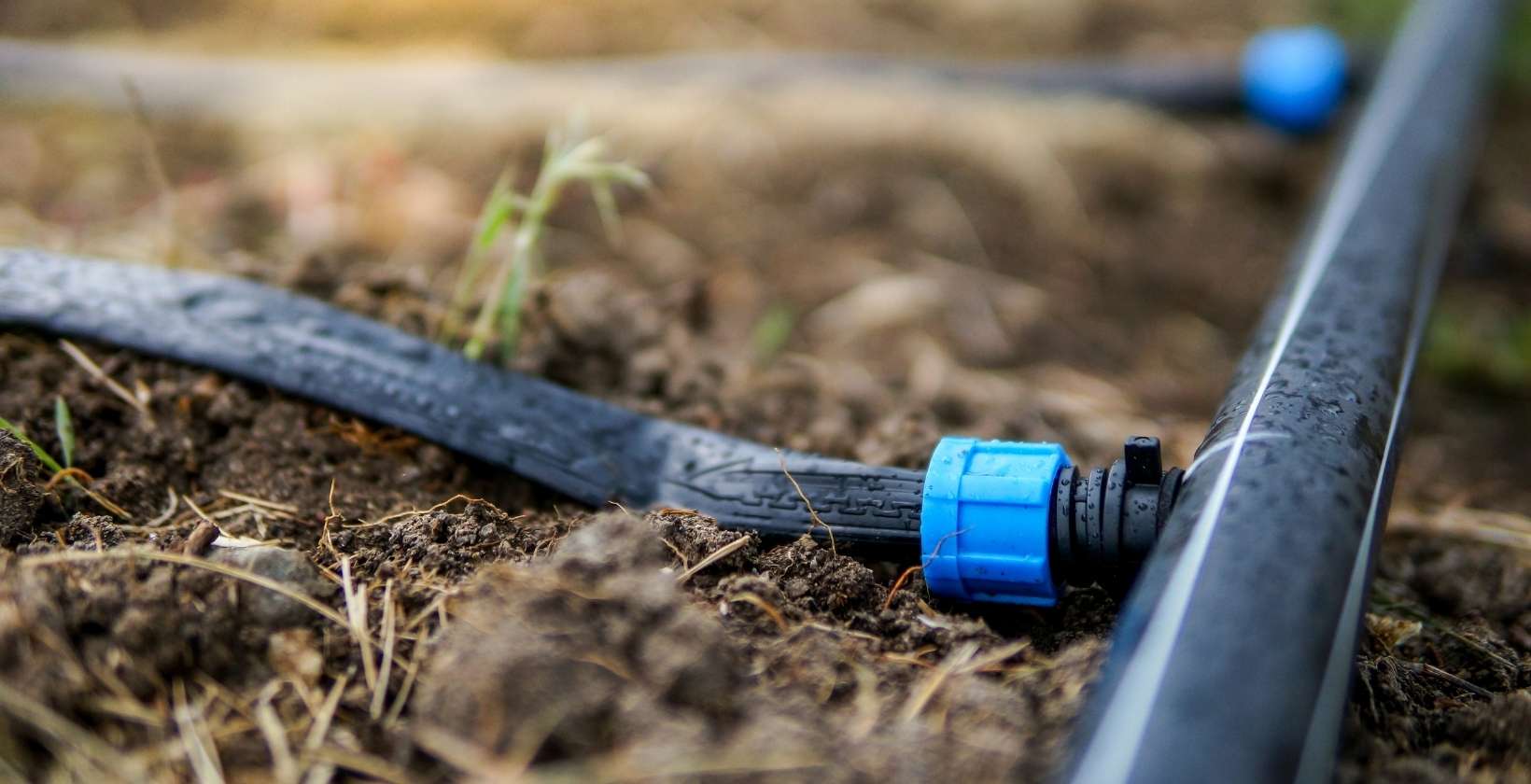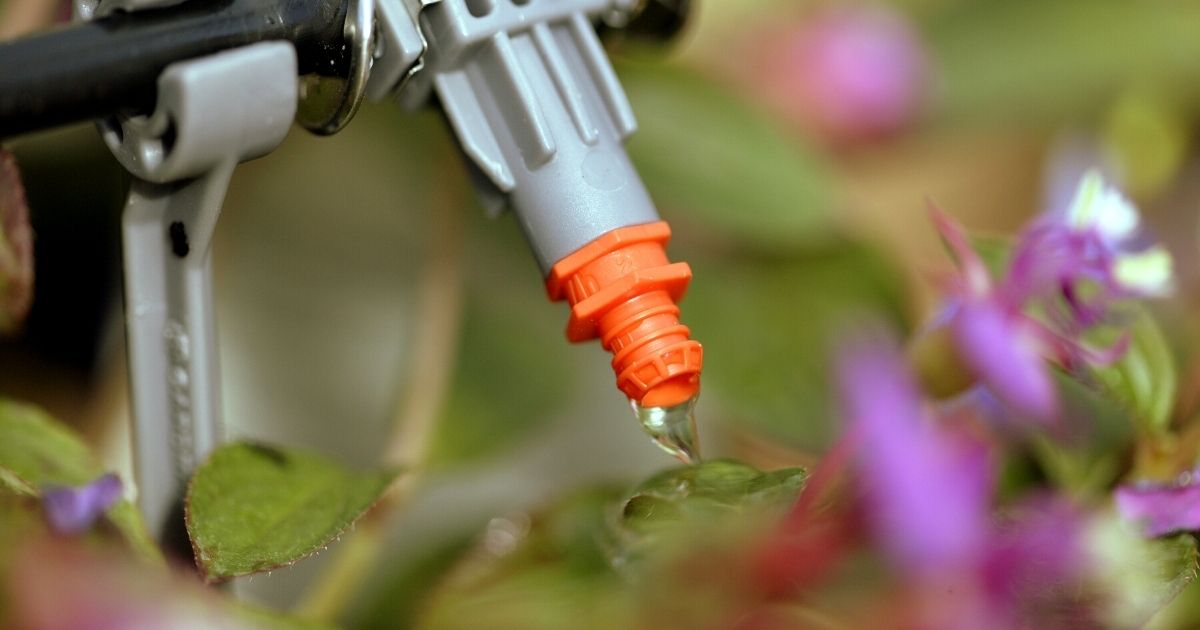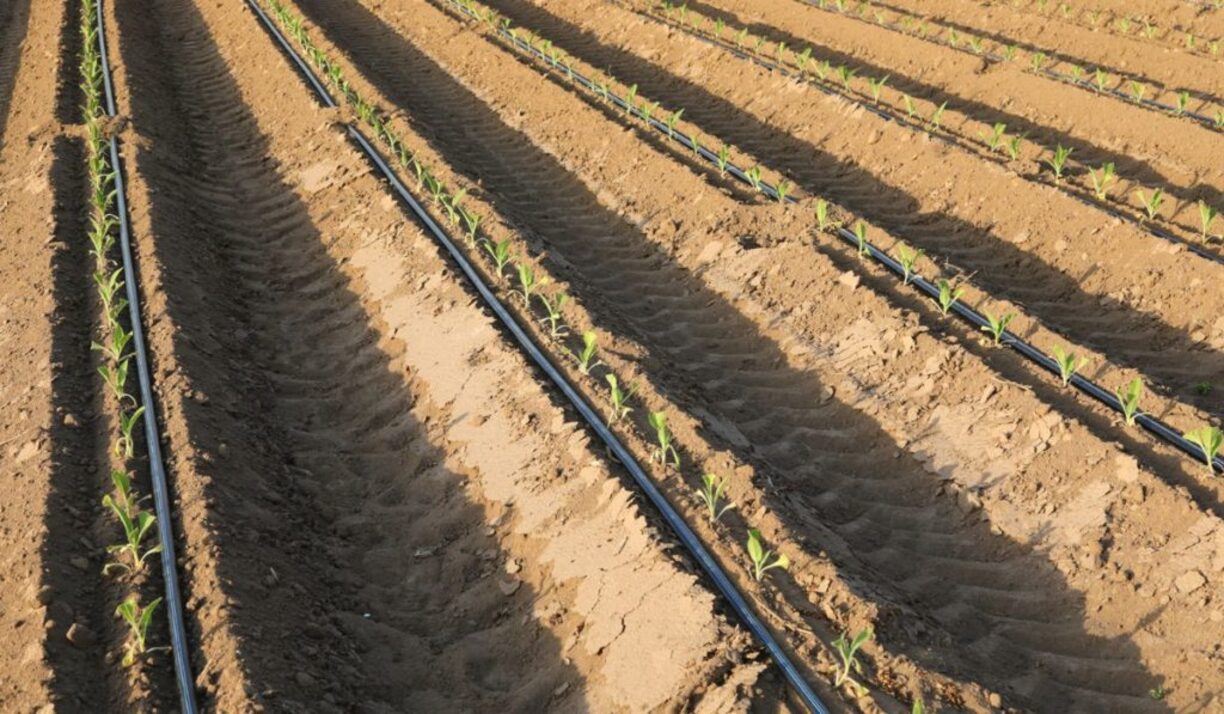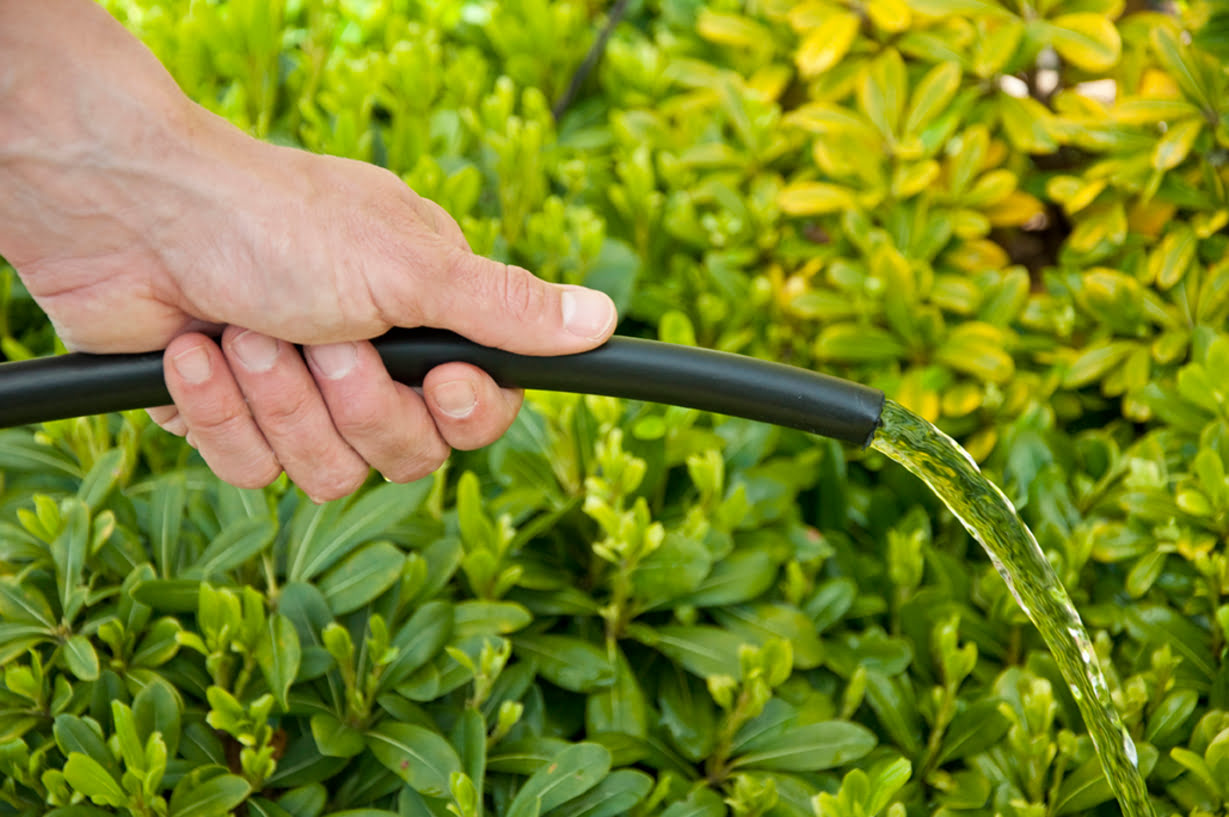Home>Gardening Basics>Tools and Equipment>How Far Can Drip Irrigation Go


Tools and Equipment
How Far Can Drip Irrigation Go
Modified: February 8, 2024
Discover the best tools and equipment for maximizing the reach of your drip irrigation system. Achieve optimal water distribution and efficiency.
(Many of the links in this article redirect to a specific reviewed product. Your purchase of these products through affiliate links helps to generate commission for Chicagolandgardening.com, at no extra cost. Learn more)
Table of Contents
- Introduction
- Definition of Drip Irrigation
- Advantages of Drip Irrigation
- Components of Drip Irrigation System
- How Drip Irrigation Works
- Factors Affecting the Range of Drip Irrigation
- Maximum Distance Covered by Drip Irrigation
- Challenges and Limitations of Drip Irrigation
- Innovations and Future Prospects
- Conclusion
Introduction
Welcome to the world of drip irrigation, a cutting-edge technology that has transformed the way we water our plants and crops. In today’s world, efficient water management is critical to addressing climate change and ensuring sustainable agriculture practices. Drip irrigation offers a revolutionary approach that not only conserves water but also maximizes crop yields.
Drip irrigation, also known as micro-irrigation or trickle irrigation, is a method of delivering water directly to the roots of plants in a controlled and precise manner. Unlike traditional overhead sprinkler systems that spray water indiscriminately, drip irrigation targets the root zone, minimizing water wastage and reducing the risk of weed growth and disease spread.
The primary objective of drip irrigation is to provide plants with a constant supply of water and nutrients, ensuring optimal growth and productivity. This technique has gained popularity among gardeners, farmers, and landscape designers due to its numerous advantages and ability to adapt to various terrains and crops.
In this article, we will delve into the fascinating world of drip irrigation, exploring its components, functionality, and range. We will uncover the maximum distance this irrigation system can cover, along with the challenges and limitations associated with it. Additionally, we will highlight the advancements and future prospects of drip irrigation that are set to revolutionize the farming industry.
So, whether you are a gardening enthusiast looking to enhance your plant’s health or a farmer striving for sustainable agricultural practices, let’s embark on this journey to discover the incredible capabilities of drip irrigation.
Definition of Drip Irrigation
Drip irrigation, also known as micro-irrigation or trickle irrigation, is a sophisticated irrigation technique that delivers water directly to the plant’s roots through a network of tubes, pipes, and emitters. Unlike traditional overhead sprinkler systems that apply water indiscriminately, drip irrigation provides water in small, controlled quantities, reducing water wastage and ensuring efficient water distribution.
The key component of a drip irrigation system is the drip emitter, which releases water at a slow and consistent rate directly onto the soil near the plant’s root zone. This method allows water to penetrate deeply into the soil and reach the plant’s roots, promoting healthy root development and minimizing evaporation.
Another essential aspect of drip irrigation is the use of pressure regulators and filters to maintain optimal water flow and to prevent clogging of the emitters. With the ability to precisely control the flow of water and nutrients, drip irrigation offers excellent flexibility and adaptability to various crops, terrains, and environmental conditions.
Drip irrigation can be implemented in a variety of settings, ranging from small residential gardens to large-scale agricultural farms. It is widely used in areas with water scarcity or water restrictions, as it can significantly reduce water consumption compared to conventional irrigation methods.
One of the distinguishing features of drip irrigation is its ability to provide targeted and localized irrigation. By delivering water directly to the root zone, it minimizes moisture loss due to evaporation and reduces the risk of foliar diseases caused by wet foliage. This precision irrigation technique not only conserves water but also enhances plant health, resulting in higher crop yields and improved overall plant growth.
In summary, drip irrigation is a method of delivering water directly to the plant’s roots through a network of tubes and emitters. It offers precise water distribution, conserves water, reduces weed growth, and optimizes crop productivity. With its versatility and efficiency, drip irrigation has become an indispensable tool in the realm of modern irrigation systems.
Advantages of Drip Irrigation
Drip irrigation offers a myriad of advantages over traditional irrigation methods. Let’s explore some of the key benefits of using this innovative technique:
- Water Efficiency: Drip irrigation is highly water-efficient as it delivers water directly to the plant’s root zone. The slow and controlled release of water minimizes evaporation and runoff, ensuring that plants receive the required amount of water without wastage.
- Reduced Weed Growth: Unlike overhead sprinkler systems, drip irrigation delivers water directly to the plant’s root zone, leaving the surrounding soil surface dry. This inhibits weed germination and reduces the competition for nutrients, helping to keep the crop beds weed-free.
- Precise Nutrient Application: Drip irrigation allows for precise application of fertilizers and nutrients directly to the root zone of plants. This targeted delivery ensures that plants receive the necessary nutrients for optimal growth, minimizing nutrient leaching and reducing costs associated with excess fertilizer usage.
- Improved Plant Health: By maintaining a consistent moisture level in the root zone, drip irrigation promotes healthy root development and minimizes stress on the plants. It also reduces the chances of plant diseases caused by wet foliage, resulting in better plant health and higher crop yields.
- Adaptability to Various Terrains: Drip irrigation can be easily customized to suit various terrains, including uneven landscapes and sloping fields. This adaptability allows for efficient water distribution and ensures that no area is left under or over-watered.
- Time and Labor Savings: Once a drip irrigation system is set up and properly maintained, it requires minimal intervention and reduces the need for constant monitoring and manual watering. This saves significant time and labor, especially in large-scale agricultural operations.
- Compatible with Automation: Drip irrigation systems can be easily automated, allowing for precise control over watering schedules. This automation capability ensures that plants receive consistent and optimal moisture levels, even when the growers are away.
- Environmental Benefits: Drip irrigation significantly reduces water consumption, minimizing the strain on water resources and promoting sustainable agricultural practices. It also helps prevent soil erosion, conserve energy, and preserve the natural ecosystem balance.
These advantages make drip irrigation an attractive choice for gardeners, farmers, and landscapers who prioritize water conservation, plant health, and overall efficiency. By harnessing the power of this innovative irrigation technique, we can transform the way we cultivate crops, create beautiful landscapes, and contribute to a more sustainable future.
Components of Drip Irrigation System
A drip irrigation system consists of several key components that work together to deliver water efficiently and effectively to plants. Let’s take a closer look at the main components:
- Water Source: The water source is the starting point of any drip irrigation system. It can be a municipal water supply, well, or water reservoir. It is important to ensure that the water source is reliable and provides sufficient water pressure and flow rate for the irrigation system.
- Main Line: The main line is a durable pipe that carries water from the water source to the rest of the irrigation system. It is usually made of PVC or polyethylene and is sized according to the water flow requirements of the system.
- Filters: Filters are crucial components of a drip irrigation system as they prevent particles, debris, and sediments from clogging the drip emitters. Common types of filters include screen filters, disc filters, and sand filters. The filter size and type depend on the water quality and the specific requirements of the system.
- Pressure Regulators: Pressure regulators control the water pressure within the drip irrigation system. They ensure that the pressure is maintained at an optimal level, preventing damage to the emitters and conserving water. Pressure regulators are available in various sizes and can be adjustable or non-adjustable.
- Distribution Tubing: Distribution tubing, also known as lateral tubing, is a flexible pipe that carries water from the main line to the plants. It is made of polyethylene and features evenly spaced holes or emitters along its length. The size and spacing of the emitters depend on the water requirements of the plants and the desired flow rate.
- Emitters: Emitters are the heart of the drip irrigation system as they distribute water to the plants. There are various types of emitters, including drip emitters, micro-sprayers, and soaker hoses. Each emitter has a specific flow rate, allowing for precise control over water application. Emitters can be pressure-compensating or non-pressure-compensating, depending on the desired level of uniformity.
- End Cap and Flush Valve: At the end of the distribution tubing, an end cap is used to seal off the system and prevent water from leaking out. A flush valve or flush cap is installed at the end of each lateral line to allow for periodic flushing of the system, removing any accumulated debris or sediments.
- Emission Devices: In addition to emitters, there are other emission devices that can be incorporated into a drip irrigation system. These devices include bubblers, which apply water in a gentle, bubbler-like manner, and micro-sprayers, which provide a fine mist of water over a larger area. The selection of the emission devices depends on the specific needs of the crops or plants being irrigated.
- Controllers and Timers: Controllers and timers are optional components that can be added to automate the drip irrigation system. They allow for precise control over watering schedules, ensuring that plants receive water at the optimal times. Controllers can be battery-powered or connected to a power source, and they provide flexibility and convenience in managing the irrigation system.
- Accessories: Various accessories can enhance the functionality and convenience of a drip irrigation system. These include fittings, connectors, couplings, and valves, which help in configuring and customizing the system layout. Mulch and ground cover materials can also be used to conserve water, reduce evaporation, and maintain soil moisture.
By understanding the different components of a drip irrigation system, one can design, install, and maintain an efficient and effective irrigation system that meets the specific needs of the plants and promotes water conservation.
How Drip Irrigation Works
Drip irrigation operates on a simple yet effective principle of delivering water directly to the plant’s root zone in a slow and controlled manner. Let’s explore the working mechanism of drip irrigation:
1. Water Source: The drip irrigation system starts with a reliable water source, such as a municipal water supply or a well. This water source supplies the required water to the system.
2. Main Line and Filters: The water flows from the water source through the main line, which is a durable pipe that carries water to the rest of the system. Along the way, filters are installed to remove any debris, particles, or sediments that could clog the emitters.
3. Pressure Regulation: Pressure regulators are installed to maintain the optimal water pressure within the system. These regulators ensure that the water pressure is neither too high, which may damage the emitters, nor too low, which may result in inadequate water distribution.
4. Distribution Tubing: The water from the main line is then carried to the plants through distribution tubing, also known as lateral tubing. This tubing is typically made of polyethylene and is flexible, allowing for easy installation and customization.
5. Emitters: Emitters are small devices connected to the distribution tubing, responsible for releasing water at a slow and controlled rate. Drip emitters, micro-sprayers, or soaker hoses are commonly used as emitters, each with its own flow rate and distribution pattern.
6. Water Release: The emitters release water directly into the soil near the plants’ root zone. The water seeps slowly into the soil, ensuring deep penetration and minimal evaporation. This targeted approach allows plants to absorb water efficiently, promoting healthy root growth and reducing water waste.
7. Precise Watering: The flow rate and spacing of the emitters can be adjusted to match the specific water requirements of different plants or areas. This customization ensures that each plant receives the right amount of water, avoiding under or over-watering.
8. Automation: Drip irrigation systems can be automated using controllers and timers. These devices allow users to set watering schedules, ensuring consistent and optimal water application. Automation also provides convenience and flexibility, especially for large-scale agricultural operations.
By following these steps, drip irrigation facilitates efficient water delivery, minimizes water wastage, and promotes healthier plant growth. This precise and controlled irrigation method enables farmers, gardeners, and landscapers to optimize water usage and achieve the desired results in their crops or gardens.
Factors Affecting the Range of Drip Irrigation
The range or maximum distance that a drip irrigation system can effectively cover depends on several factors. Understanding these factors is crucial for designing and implementing an efficient drip irrigation system. Let’s explore the key factors that influence the range of drip irrigation:
- Water Pressure: The water pressure at the source and within the system plays a significant role in determining the range of drip irrigation. Higher water pressure allows for water to be pushed further through the distribution tubing and emitters, increasing the coverage area.
- Emitters Flow Rate: The flow rate of the emitters directly impacts the range of drip irrigation. Emitters with higher flow rates can cover a larger area, while those with lower flow rates are suitable for shorter distances. Choosing the appropriate emitter flow rate ensures optimal water distribution and helps maximize the range of the system.
- Tubing Diameter and Length: The diameter and length of the distribution tubing affect the range of drip irrigation. Larger diameter tubing can provide higher flow rates, allowing for longer distances to be covered. Similarly, longer tubing can extend the reach of the system, though consideration must be given to maintaining consistent water pressure throughout the length of the tubing.
- Soil Type: The soil type plays a crucial role in determining the range of drip irrigation. Sandy soils allow water to travel further horizontally, while clay soils can hinder water movement. Understanding the soil’s water-holding capacity and its permeability helps in determining the spacing and flow rate of the emitters and the overall coverage area.
- Topography and Slope: The topography and slope of the land can affect the range of drip irrigation. On hilly or sloping terrain, gravity and water pressure can impact water distribution. Adjustments may need to be made in terms of emitter spacing, water pressure, or the use of pressure compensating emitters to effectively cover the entire area.
- Plant Water Needs: The water requirements of the plants being irrigated also influence the range of drip irrigation. Different plants have varying water needs, and the spacing and flow rate of the emitters should be adjusted accordingly to ensure adequate water coverage for each plant.
- Irrigation Schedule: The frequency and duration of irrigation also impact the range of drip irrigation. If plants require more frequent watering, the system must be designed to cover the required area within the desired time frame to prevent under or over-watering.
- System Maintenance: Regular maintenance of a drip irrigation system is crucial for maintaining optimal performance and maximizing its coverage area. Clogged emitters, damaged tubing, or leaks can reduce the range of the system and compromise watering efficiency. Performing routine inspections and timely repairs ensures consistent and effective water distribution.
By considering these factors and tailoring the drip irrigation system to the specific requirements of the landscape or crops, one can optimize the range of the system and achieve efficient and effective irrigation.
Maximum Distance Covered by Drip Irrigation
The maximum distance that can be effectively covered by a drip irrigation system depends on various factors, including water pressure, tubing diameter, emitter flow rate, and soil type. While there is no strict limit to the range, it is important to consider these factors to ensure efficient water distribution and plant health.
Typically, drip irrigation systems can cover distances ranging from a few meters to several hundred meters. However, the coverage area may vary depending on the specific conditions and requirements of the irrigation project.
Water pressure is a critical factor in determining the range of the system. Higher water pressure allows for water to be pushed further through the distribution tubing and emitters, resulting in a greater coverage area. Conversely, lower water pressure may limit the range of the system, necessitating the use of additional distribution lines or pressure compensating emitters to ensure adequate coverage.
The diameter and length of the distribution tubing also affect the maximum distance covered by drip irrigation. Larger diameter tubing can provide higher flow rates, enabling water to be transported over longer distances. Longer tubing allows for more extensive coverage but requires careful monitoring of water pressure to maintain uniform distribution throughout the system.
The flow rate of the emitters significantly impacts the range of drip irrigation. Emitters with higher flow rates can cover larger areas, making them suitable for longer distances. However, attention should be given to avoid excessive water application in certain areas, as it may lead to waterlogging and plant stress.
Soil type plays a crucial role in determining the maximum distance covered by drip irrigation. Sandy soils facilitate horizontal water movement, allowing water to reach further distances. In contrast, clay soils have lower permeability, limiting water movement. Understanding the soil’s characteristics helps in determining the spacing and flow rate of the emitters and adjusting the system accordingly to optimize the coverage area.
Topography and slope can impact the range of drip irrigation. On hilly or sloping terrain, water pressure and gravity influence water distribution. Adjustments may be required in terms of emitter spacing, water pressure, or the use of pressure-compensating emitters to ensure even coverage throughout the irrigation area.
It is important to note that the maximum distance covered by a drip irrigation system should not compromise the overall effectiveness of water delivery. Careful consideration of the factors listed above, along with an understanding of the specific water requirements of the plants being irrigated, helps achieve optimal coverage and promote healthy plant growth.
By carefully designing and implementing a drip irrigation system, taking into account these factors, it is possible to maximize the coverage area and provide efficient irrigation across various landscapes, gardens, and agricultural fields.
Challenges and Limitations of Drip Irrigation
While drip irrigation offers numerous advantages, it does come with certain challenges and limitations that need to be addressed in order to ensure its effective implementation. Let’s explore some of these challenges:
- Initial Investment: Drip irrigation systems often require a higher upfront investment compared to traditional irrigation methods. The cost of purchasing materials, installation, and system design can be a barrier for small-scale farmers or gardeners.
- System Design and Maintenance: Proper design and regular maintenance are crucial for the efficient operation of a drip irrigation system. System design must consider factors such as soil type, slope, and plant water requirements. Regular maintenance, including cleaning filters, checking emitters, and ensuring proper water flow, is essential to prevent clogging and maintain optimal system performance.
- Clogging of Emitters: Emitters in a drip irrigation system are prone to clogging due to debris, mineral buildup, or microbial growth. Regular cleaning and proper filtration are needed to prevent clogging and ensure uniform water distribution.
- Uneven Distribution: Drip irrigation may face challenges in achieving complete and uniform water distribution, especially over longer distances. Factors such as pressure fluctuations, uneven terrain, and variations in soil permeability can result in uneven water application and inadequate coverage.
- Water Quality Concerns: Poor water quality, such as high salinity or chemical content, can negatively impact the performance of drip irrigation systems. It can lead to emitter clogging, plant stress, and reduced water uptake. Water treatment or filtration may be necessary to mitigate these issues.
- Limitations for Large-Scale Agriculture: Drip irrigation may not be the most practical option for large-scale agricultural fields with extensive acreage. The infrastructure required, including the layout of distribution lines and the management of numerous emitters, can be challenging and time-consuming.
- Limited Coverage Area: The maximum reach of a drip irrigation system may be limited by factors such as water pressure, tubing diameter, and emitter flow rate. Large distances or areas with varying topography may require additional distribution lines or the installation of separate zones to ensure adequate coverage.
- Power Dependency: In situations where automation is desired, drip irrigation systems often require electricity to operate timers, valves, and pumps. This power dependency can be a limitation in areas with unreliable or limited access to electricity.
- Management and Skill Level: Drip irrigation systems require proper management and a certain level of technical knowledge for optimal operation. Farmers and gardeners need to understand the system design, maintenance requirements, and irrigation scheduling to achieve desired results.
Despite these challenges and limitations, drip irrigation remains a highly effective and efficient method of water delivery. Through careful planning, regular maintenance, and addressing specific constraints, the benefits of drip irrigation can outweigh the challenges, enabling sustainable water management and enhancing agricultural productivity.
Innovations and Future Prospects
Drip irrigation has continued to evolve and advance, and there are several exciting innovations on the horizon that hold promise for the future of this irrigation technique. These innovations aim to address the challenges and limitations of drip irrigation and further enhance its efficiency and effectiveness. Let’s explore some of the innovations and future prospects:
- Sensor Technology: The integration of sensor technology into drip irrigation systems allows for real-time monitoring and precise control of irrigation. Soil moisture sensors, weather sensors, and plant-based sensors can provide valuable data to optimize water application and adjust irrigation schedules accordingly.
- Precision Irrigation Management: Advances in data analytics and computer modeling have paved the way for precision irrigation management. By analyzing data on plant growth, soil conditions, and weather patterns, growers can make informed decisions on irrigation scheduling, optimizing water usage, and crop productivity.
- Smart Irrigation Controllers: Smart irrigation controllers utilize artificial intelligence and machine learning algorithms to optimize irrigation schedules based on real-time data. These controllers can adjust water application based on factors such as evapotranspiration rates, weather forecasts, and plant needs, leading to improved water efficiency and crop health.
- Improved Emitter Design: Innovations in emitter design focus on reducing clogging and improving distribution uniformity. Self-cleaning emitters, pressure-compensating emitters, and labyrinth-like flow paths are among the advancements that minimize emitter blockage and enhance water distribution, ensuring uniform coverage across the irrigation area.
- Alternative Water Sources: The future of drip irrigation includes exploring alternative water sources such as recycled water, treated wastewater, and rainwater harvesting. Utilizing these sources reduces reliance on freshwater supplies and contributes to sustainable water management.
- Integration with IoT and Automation: Drip irrigation systems are increasingly being integrated with the Internet of Things (IoT) and automation technologies. Remote monitoring, control systems, and automated feedback loops enable growers to manage irrigation operations more efficiently and precisely.
- Adaptive Irrigation: Adaptive irrigation systems use dynamic and adaptive algorithms to provide irrigation recommendations based on real-time data. These systems can adjust the irrigation schedule dynamically, considering factors such as changing weather conditions, crop growth stages, and soil moisture levels.
- Sustainable Irrigation Practices: The future of drip irrigation lies in the integration of sustainable practices such as fertigation (the application of fertilizers through irrigation), precision dosing of agrochemicals, and cover cropping. These practices maximize resource utilization, promote soil health, and minimize environmental impacts.
The innovations and future prospects in drip irrigation hold immense potential to further improve water conservation, enhance crop yields, and promote sustainable agriculture. Continued research, development, and collaboration among scientists, engineers, and growers will drive the adoption and implementation of these innovative technologies, leading to more efficient and effective water management in the agriculture sector.
Conclusion
Drip irrigation has revolutionized the way we approach irrigation, offering numerous advantages in terms of water efficiency, precise nutrient delivery, and improved plant health. This sophisticated irrigation technique delivers water directly to the roots of plants, minimizing water wastage and promoting sustainable agriculture practices.
Throughout this article, we have explored the definition of drip irrigation and its components, delved into its functioning and the factors influencing its range. We have also discussed the challenges and limitations of drip irrigation and the innovative advancements that hold promise for the future.
While drip irrigation may require an initial investment and regular maintenance, its benefits far outweigh the challenges. Water conservation, reduction in weed growth, improved plant health, and labor savings are just a few of the advantages it offers.
As technology continues to advance, we can expect to see even more innovative solutions in the field of drip irrigation. Sensor technologies, precision irrigation management, smart controllers, and improved emitter designs are opening up new possibilities for more efficient water usage, enhanced crop productivity, and sustainable irrigation practices.
It is important for farmers, gardeners, and landscapers to consider their specific needs, including soil type, plant water requirements, and the layout of their land when designing and implementing a drip irrigation system. Careful planning, regular maintenance, and staying updated with the latest innovations will ensure the optimal performance of the system.
In conclusion, drip irrigation is a powerful tool in water management and agricultural practices. Its ability to conserve water, reduce labor, and enhance crop yields makes it an invaluable technique for addressing the challenges of sustainable agriculture in an increasingly water-scarce world. By harnessing the benefits of drip irrigation and embracing innovative advancements, we can create a more sustainable future for agriculture, gardens, and landscapes.


